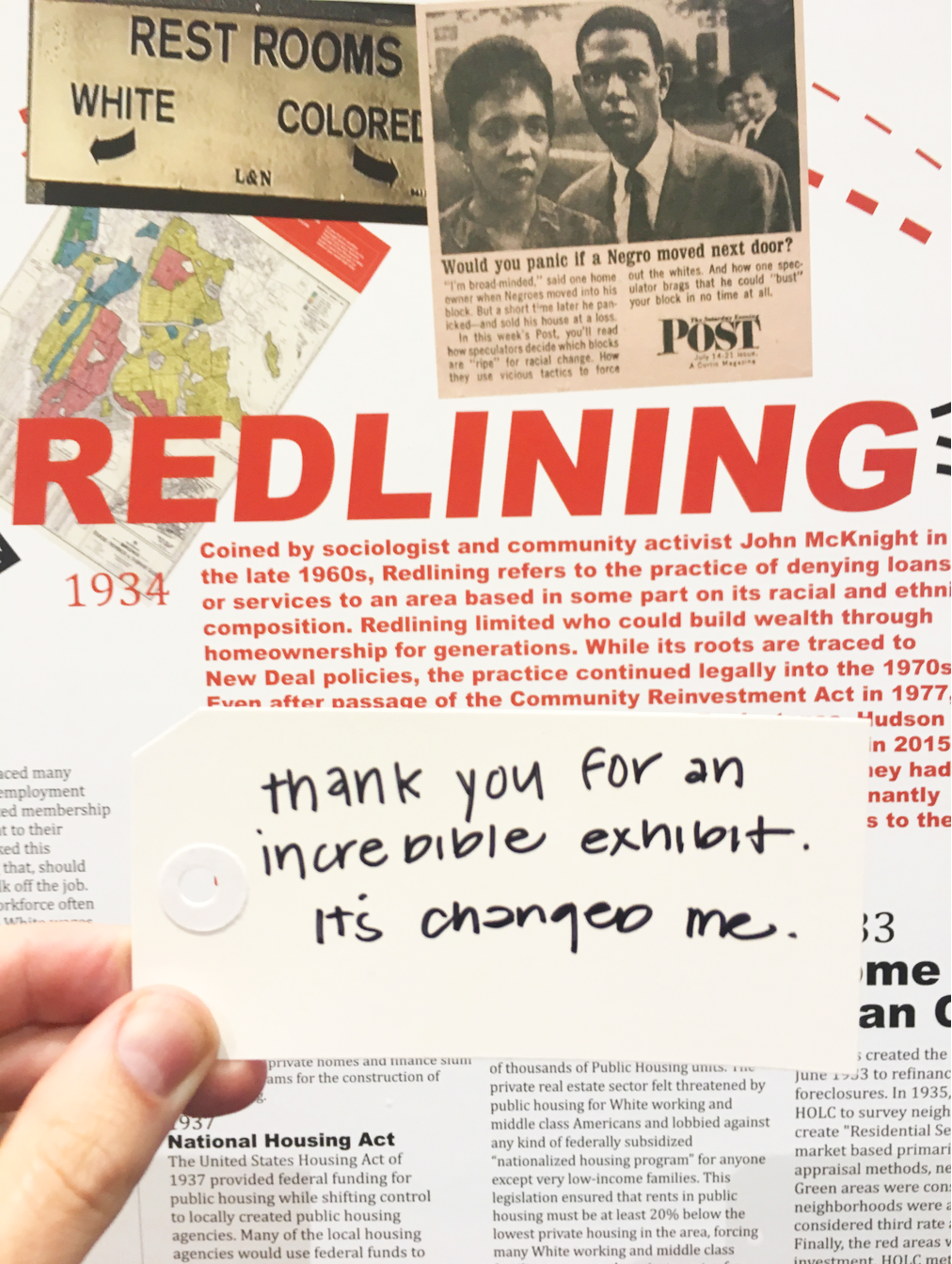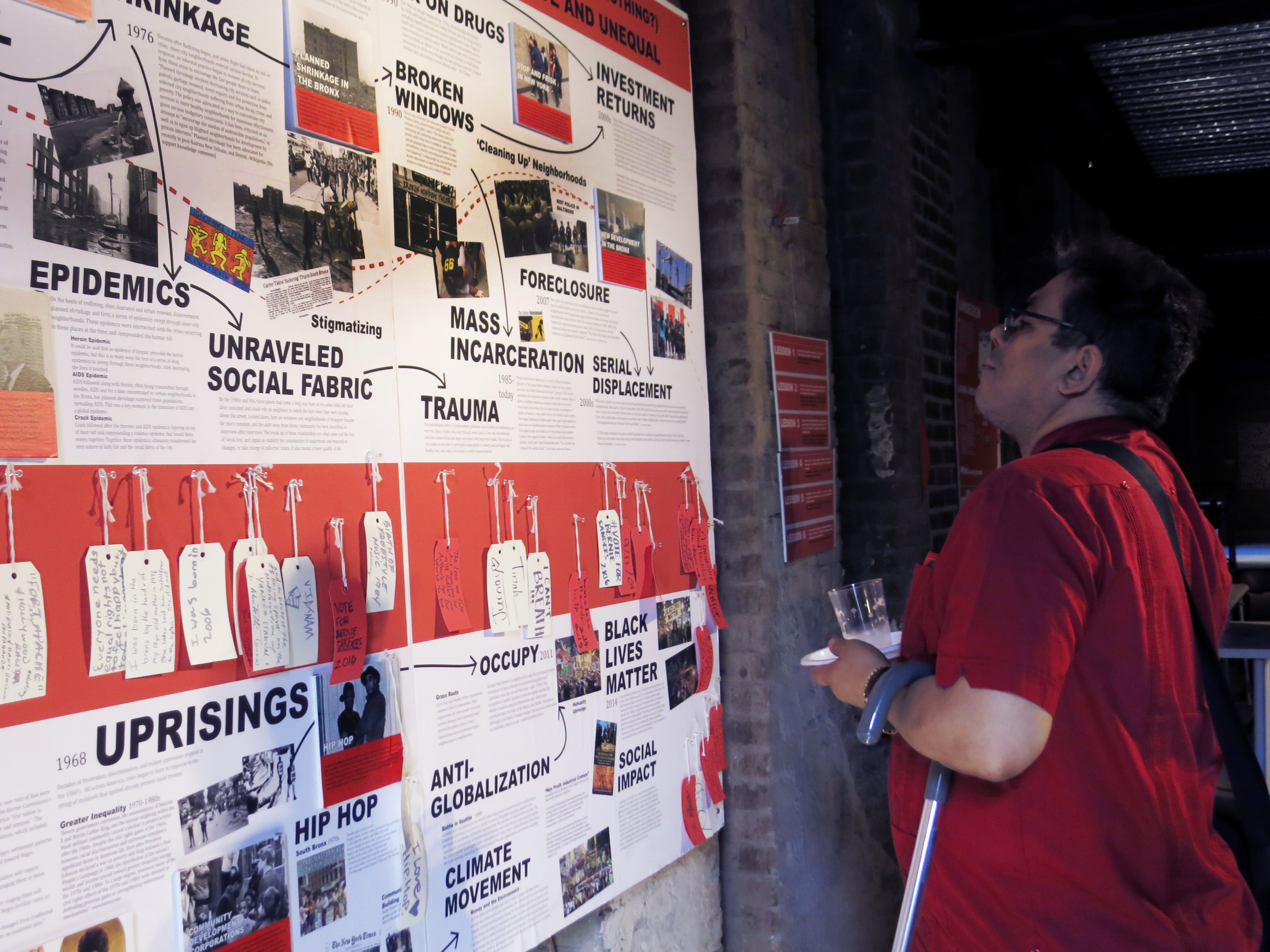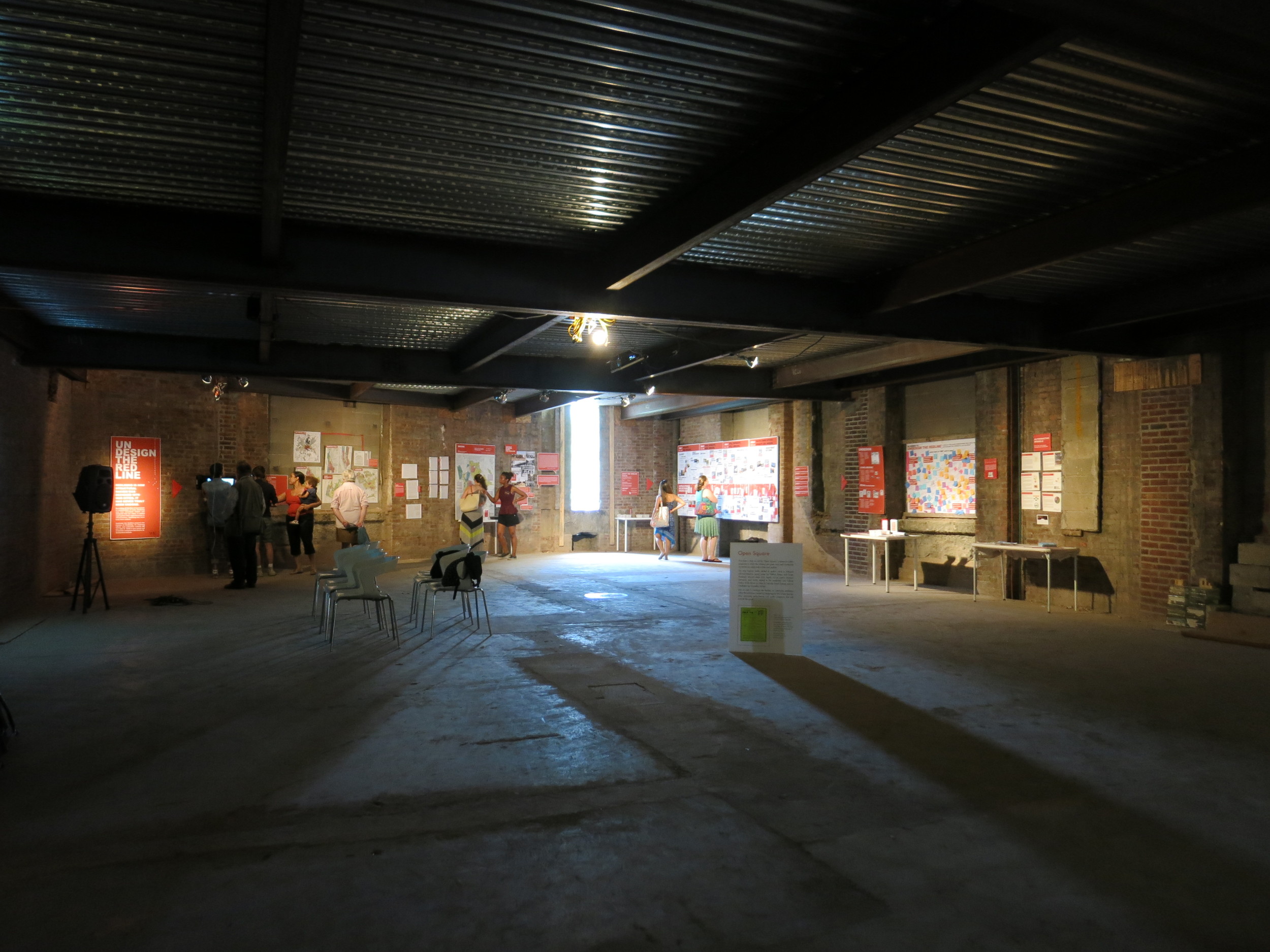UNDESIGN THE REDLINE
is a framework for unearthing our most deep, systemic and entangled crises. This interactive exhibit, workshop series and curriculum explores the history of structural racism and inequality, how these designs compounded each other from 1938 Redlining maps until today, and how WE can come together to undesign these systems with intentionality.
The exhibit travels nationally to cities, towns and communities to learn together, activate and mobilize us into a strong “WE” capable of transformation. We think the exhibit should go everywhere.
Media focus on Undesign the Redline: Marketplace on NPR
INTERACTIVE EXHIBIT
The signature piece of the Undesign the Redline project, this traveling exhibit invites participants to learn the history, interact with the stories and invent the future of undoing structural inequities. Become a part of a larger conversation, as many of the elements of the exhibit have been inspired by and added to by those who have visited previous installations. The exhibit has been in pop-up store fronts, abandoned buildings, social impact conferences, corporate headquarters and on the street. To Undesign Redlining, we need to connect all of these people and places.
Introduction: How explicit racism became structural.
Redlining: Explore the HOLC Maps and area descriptions of your city.
Timeline: Where does redlining fit in a history of devaluing and disenfranchisement? How was it combatted by people with another vision for society?
Stories from the Line: Hear from the experiences of those affected by Redlining and humanize the lessons of history.
Undesign the Line: Learn about alternative models, hear inspirational stories, and participate in inventing the policies, practices and entities that could undesign this legacy.
Custom Elements: What should we focus on to tailor this exhibit to your interests and focus?
WORKSHOPS
Co-design as a group, neighborhood, or organization. Build facilitated conversations about structural inequity, with focuses on diversity and inclusion, community engagement and co-creation, investments and resources, as well as program development and policy. With the Undesign exhibit as a foundation, these design based workshops provide space for transformation.
PROJECT VIDEOS
PRESENTATION
Go in-depth with us through a presentation outlining the history, effects and possibilities for undesigning redlining. Begin a conversation about how your neighborhood, organization or city can re-think its approach to entangled problems with structural inequality.
PAST EXHIBIT
Undesign the Redline and the New York City Department of Health
UNDESIGN L.A.
The exhibit at a public library.
NYHC UNDESIGN PANEL
Exhibit Walkthrough and Panel
WHAT IS REDLINING?
Dr. Mindy Fullilove explains the process and history of Redlining.
UNDESIGN YOUTH PROJECTS
Students take on Redlining in Cleveland.
PUBLIC SERVICE AWARD
NYHC award for public service in NYC
STORY FROM THE LINE
How are people grappling with the legacy of Redlining?
EXHIBIT IN DEPTH
The experience of the exhibit in L.A.
UNDESIGN AND DATA
Opportunity 360 data and local exhibits.
EXPLORE THE EXHIBIT IN VIRTUAL REALITY
DOWNLOAD OUR TOOL KIT
PARTNERS AND IMPACT
“This exhibit has been a breakthrough for Enterprise. The workshop... generated incredible discussion internally, and it was wonderful to again bring our partners to the conversation.”
“This exhibit helps us imagine what our community can look like. It motivates us to pursue bold change to implement our collective vision.”
IN THE NEWS
Baltimore
Cleveland
Chicago
Denver
New Exhibit Highlights the Explicitly Racist Policies of the Past that Still Shape Today’s Denver
New Exhibit in Denver Focused on Redlining Aims to Educate and Collect Stories
Los Angeles
New Orleans
MarketPlace on NPR segment on the Undesign the Redline Exhibit:
'Undesign the Red Line' connects history of redlining to current issues
By Emily Julia Roche
"Undesign the Red Line," an ongoing exhibition from design studio Designing the We, connects the history of New York City’s racial housing segregation to current political and social issues. The exhibition is being hosted by Enterprise New York at its office in 1 Whitehall Street in downtown Manhattan.
“Housing is so deeply anchored in the segregation of our city,” said Judi Kende, vice president of Enterprise New York. “It’s very, very important to think about the development of affordable housing … [and] think about it more intentionally.”
Redlining began in 1934 after the Federal Housing Administration was established to insure mortgages and prevent foreclosure on family homes. In 1935, the now-defunct Home Owners’ Loan Corporation compiled a map of 239 cities indicating the risk of real estate development in various neighborhoods in each city.
The HOLC maps, which were declassified in the 1990s, divide the cities into four zones illustrating investment security: green (A), blue (B), yellow (C), and red (D). Properties in the A zones were designated as the safest for real estate investment, while D neighborhoods, which were populated largely by African Americans and immigrants, were considered high risk for investors.
“The basic essence of the map is to categorize everybody,” said Braden Crooks, co-founder of Designing the We. “Policies like redlining ... convert a very explicitly racist policy into a much more structural situation down the line.”
Race was the primary factor in determining where the zones were drawn, and neighborhoods that had been “infiltrated” by minorities were redlined. The residents of those neighborhoods were often unable to access housing loans, mortgages, and other financial services.
In HOLC’s 1938 maps of Queens, Manhattan, the Bronx, and Brooklyn, only a few neighborhoods were designated A zones, including Marble Hill and the Upper East Side in Manhattan, Riverdale in the Bronx, the westernmost portion of Bay Ridge in Brooklyn and a few blocks of Forest Hills in Queens.
“One of the things that we want people to take away is the deep segregation ... that has led to very different outcomes for communities of color is a result of very intentional policies and practices,” Kende said.
The exhibition also makes connections between the racial redline policies of the Great Depression era and current political and social movements, such as Occupy Wall Street and Black Lives Matter, and development projects, such as Harlem’s short-lived Pathmark grocery store.
“Many policy responses are created to fix a current crisis, but in doing so, they often create the next crisis because they’re missing … a certain understanding,” said Gregory Jost, an activator on the exhibit.
Jost referred to the Pathmark in Harlem as an example of failed investment, saying that the supermarket on 125th Street failed to “solve the problem of the food desert” because the project failed to bring wealth into the redlined community.
“Enterprise is hosting 'Undesign the Redline' to shed the light on discriminatory policies and practices — many of them intentional — that form the root causes of clustered poverty and segregation,” wrote Elizabeth Strojan, an Enterprise representative, in an email.


















